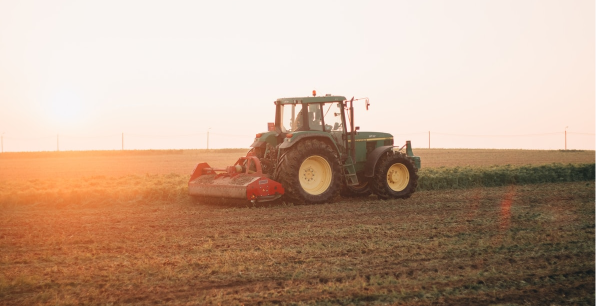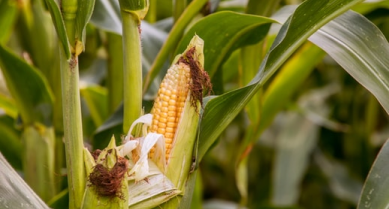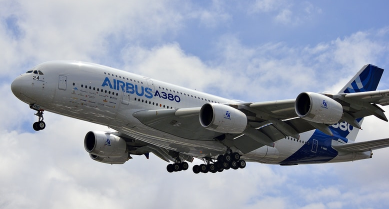Two types of machine learning
This important subset of artificial intelligence can be categorised into two areas
First coined in 1959, machine learning is a familiar (if sometimes poorly understood) term. Often considered a subset of artificial intelligence, the outcomes of machine learning are present in most of our everyday lives. This article defines machine learning within the context of the agri-food sector
Machine Learning is a subset of artificial intelligence which allows computers to perform tasks without human instruction, and to improve their performance in those tasks through observation and learning.
Familiar examples include Facebook, Instagram and YouTube. These platforms use a machine learning algorithm to predict content you would find engaging. This content is surfaced in your feed and your engagement with that content trains the algorithm further. The result is – for better or worse – platforms which have become highly effective at directing you towards content which you find engaging.
However, the impact of machine learning is being felt far beyond social media. This article seeks to describe the two broad categories of machine learning within the context of what they’re doing in the agri-food sector.
1
Supervised machine learning
Supervised machine learning relies on the presence of a teacher. This teacher will train the algorithm by providing a number of correct answers up front. The teacher reviews the algorithm and corrects it when it makes mistakes.
This type of machine learning is possible when you have both the input and output variable for a range of scenarios. This enables a machine learning algorithm to be ‘trained’ on this data – so that it begins to understand the relationship between inputs and outputs.
The ultimate goal is that when new inputs are provided, the model will automatically and accurately predict the output.
Typically, supervised learning will be positioned into one of two groups:
Regression
Is where the output is a value, e.g. revenue, weight or yield. Often, this is used to predict a continuous value, e.g. daily live weight gain.
Case study: Predicting optimum harvest dates
Barfoots are an international food producer and distributor. A large number of their crops are grown overseas and destined for UK supermarkets. Inefficiencies in the supply chain caused, for example, by a late harvest can have severe consequences, e.g. if contracted orders fail to arrive on time then third-party produce must be sourced to fill this gap – often at a significant cost.
Agrimetrics worked with Barfoots to create a model that was capable of predicting which harvest window a crop would fall into. The model was trained with a range of data sources, including temperature, day length and information collected from sensors. Once trained, the model could be fed with weather forecasts, which enabled it to predict harvest windows.
The result was the ability to accurately predict harvest windows three weeks in advance. This meant that supply chain issues could be identified in advance and managed appropriately – this directly impacts the bottom line.
Classification
Classification is where the output of the machine learning algorithm is a class or category. A familiar example of this would be our inbox, where incoming emails are routinely classified as ‘spam’ or ‘not spam’.
Case study: Crop Identification
SAR radar data was collected for the 2016/17 season. The algorithm was trained on images throughout the growing season, with the goal being to identify the crop type as early as possible (this is complicated because young crops tend to look visually similar). Existing crop type data for that season was used to correct inaccurate identifications.
The machine learning algorithm was able to predict early crops with with a high level of accuracy (65%). This number is set to improve as new sources of training data are added. Eventually, the algorithm will be able to make highly accurate predictions much earlier in the growing season that is currently possible. This has important implications for a range of stakeholders; commodities traders, for example, will be able to identify the amount and quality of milling wheat growing in the UK early in any given season.
2
Un-supervised machine learning
Unsupervised Machine Learning involves training an algorithm without a teacher or training data. This type of learning is useful when data does not have explicit labels. Here, the algorithm acts without guidance to group the unlabelled data according to their similarities, patterns and other variables.
Broadly speaking, unsupervised machine learning can be put into two categories:
Clustering: Creates groupings in the data based on their similarities. One example would be spatially grouping disease outbreaks – these clusters could then be used to identify higher risk areas. The features common to these areas can then be identified and this could help inform our awareness of the causes of disease outbreak.
Association: Relates to the discovery of rules which are present in the data. This will be familiar to anyone who has used an e-commerce platform such as Amazon. The platform will have learnt that people who buy X also have a tendency to buy Y. This association can be used to make a purchase recommendation, with your reaction to that recommendation further informing the algorithm.
Other articles that might interest you

AI identifies crops from space with 90% accuracy
Agrimetrics launches CropLens AI, a proprietary algorithm that identifies crop types from space.

ClearSky: Cloud free satellite data for agriculture
ClearSky's artificial intelligence removes a major barrier to the efficacy of satellite

ClearSky: Cloud free satellite data for agriculture
ClearSky's artificial intelligence removes a major barrier to the efficacy of satellite

Agrimetrics partners with Airbus to reduce cost
Crop Analytics, a crop and field analytics package from Airbus, is now available at a new, lower price.



